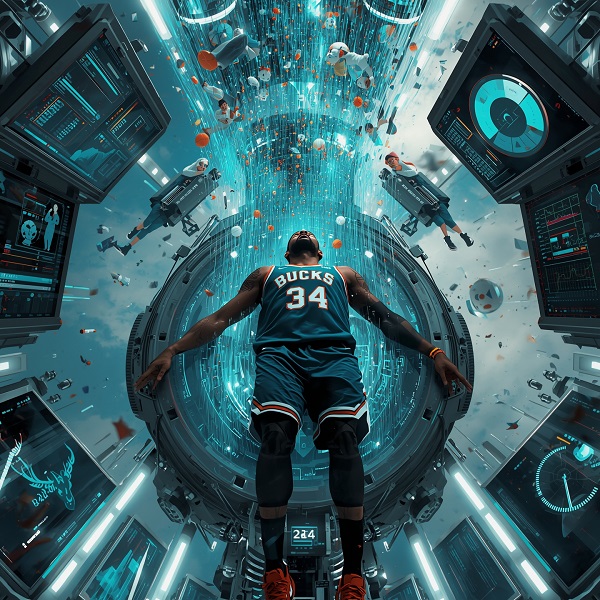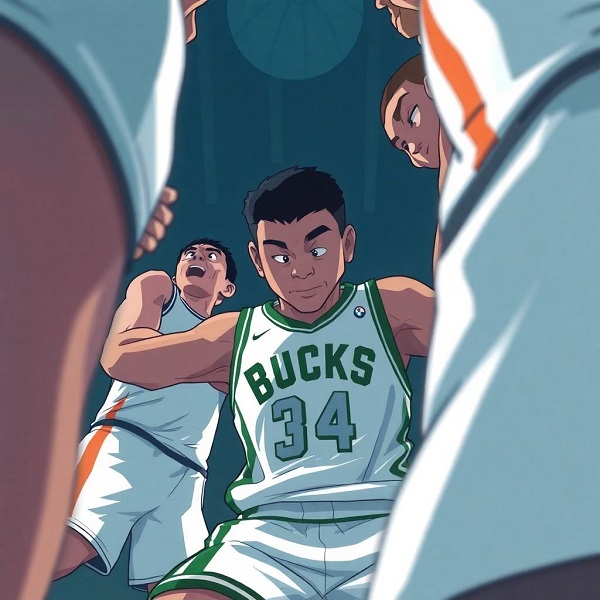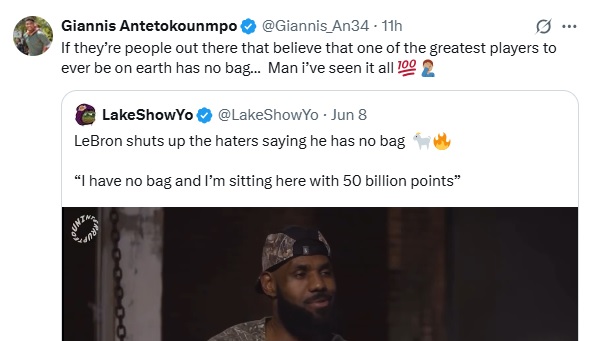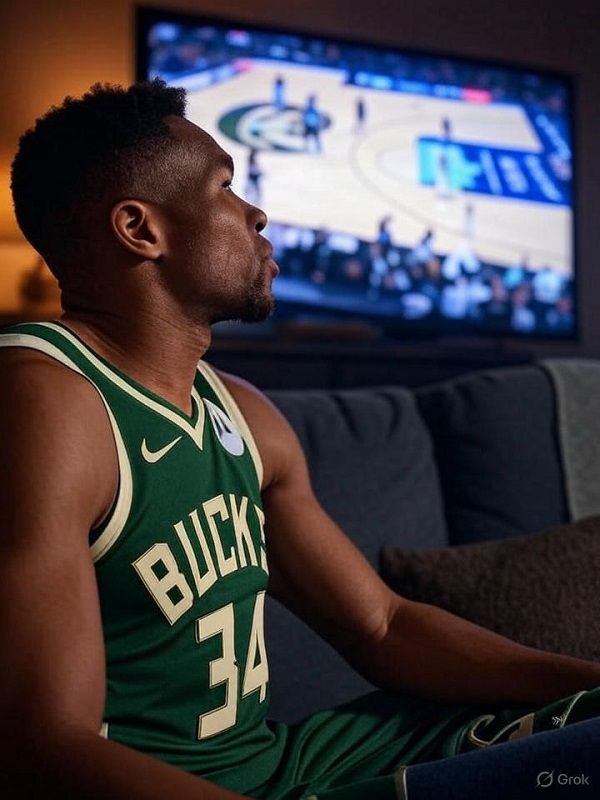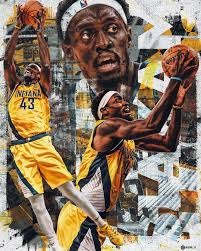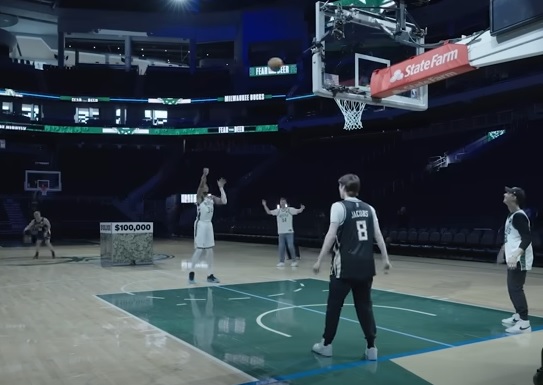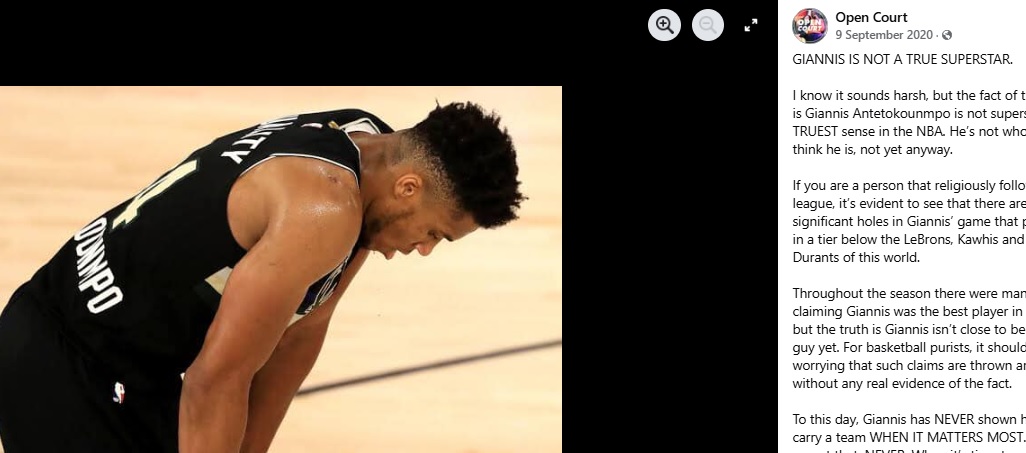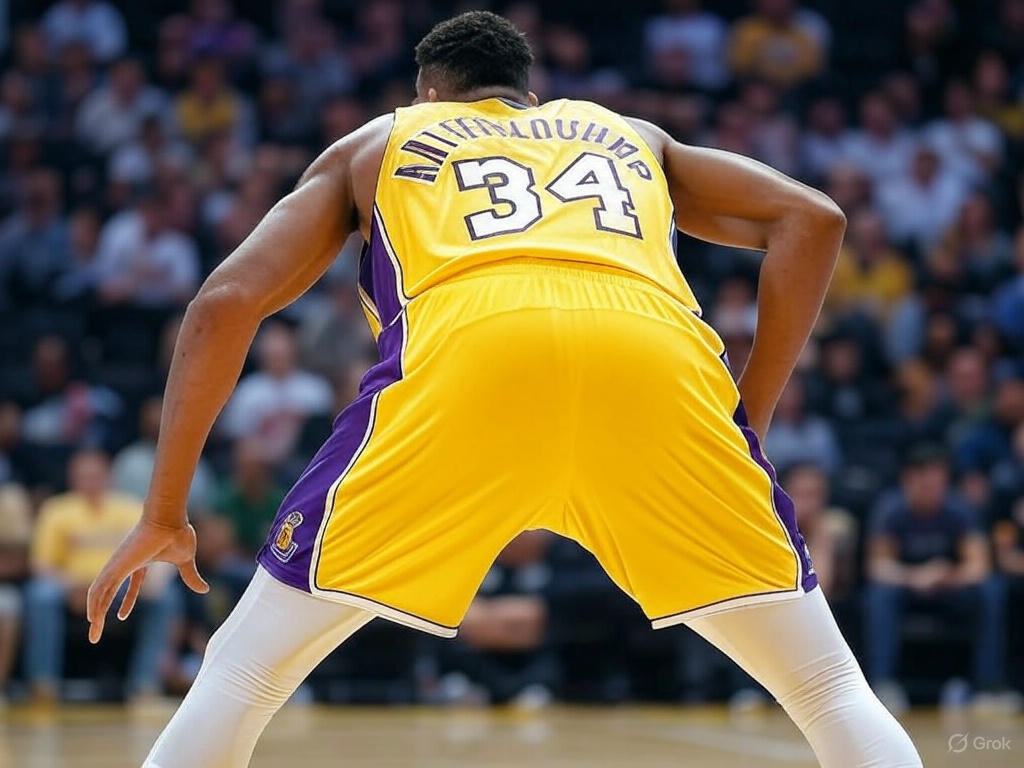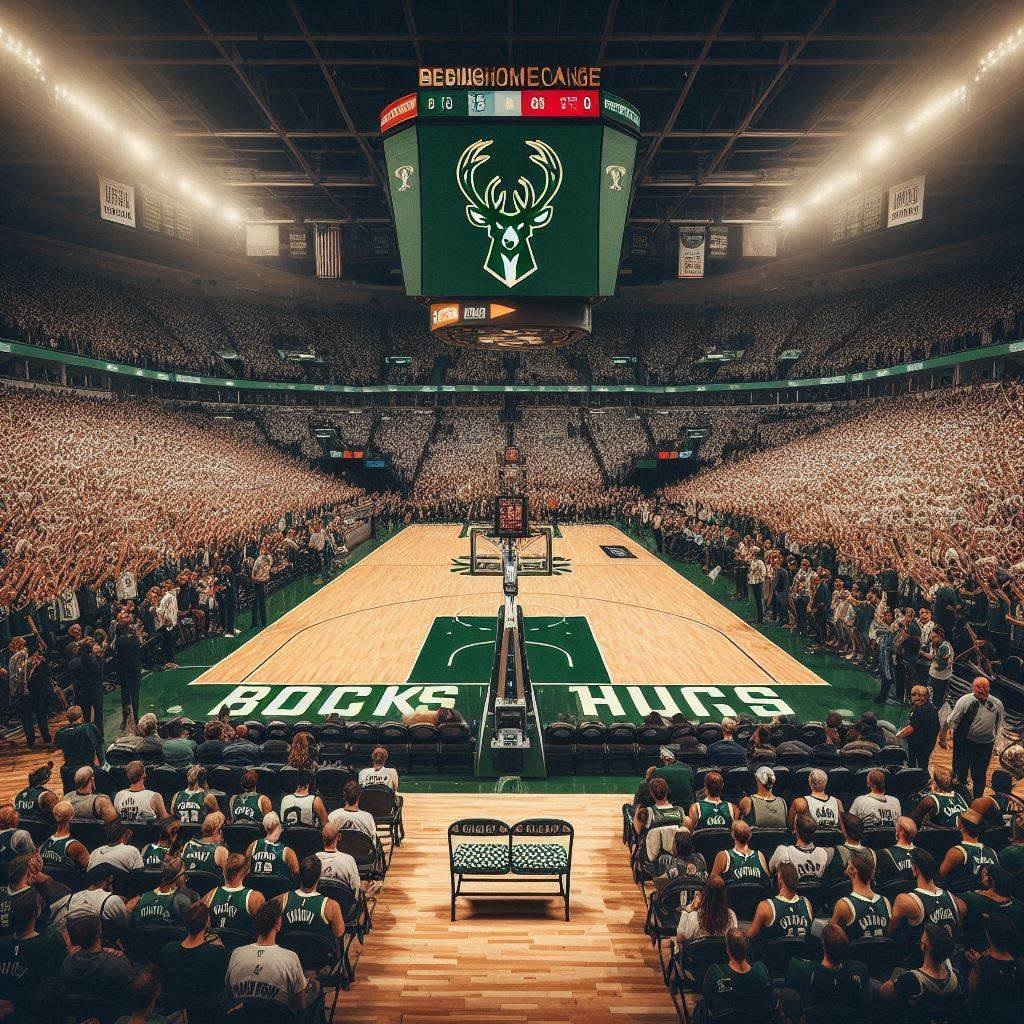The Miami Heat have historically had success slowing him down, leveraging a mix of versatile defenders and smart team schemes. Especially when it really counts, the Heat have his number time and time again.
Bam Adebayo: The Anchor of Versatility
Defensive Impact:
Bam Adebayo, Miami’s All-Star center, is often the linchpin of the Heat’s strategy against Giannis. At 6’9” and 255 pounds, Adebayo doesn’t quite match Giannis’ height, but his agility, strength, and defensive IQ make him a formidable match up. One of Giannis’ primary weaknesses is his lack of a consistent outside jump shot—historically, he’s hovered around 30% from three-point range and struggles with mid-range pull-ups. Adebayo exploits this by sagging off Giannis when he’s on the perimeter, daring him to shoot while clogging the paint to deter drives. This season match has been said about Giannis “improving” his mid range but it is a completely bogus claim. In only two mid range distances has he improved but that is only in easy games.
Adebayo’s lateral quickness allows him to stay in front of Giannis on drives, and his strong lower body helps him absorb contact without giving up easy baskets. Miami often employs a “wall” strategy, where Adebayo is the centrepiece, forming a physical barrier to prevent Giannis from getting a straight line to the rim. This forces Giannis into taking contested shots or passing out to teammates, where his play making isn’t always precise under pressure (evidenced by his occasional turnover spikes against Miami).
Offensive Exploitation:
On the flip side, Adebayo takes advantage of Giannis’ defensive tendencies. Giannis is vulnerable to quick decision-makers like Adebayo, who excels as a short-roll play maker in pick-and-roll sets. By pulling Giannis away from the rim, Adebayo either finishes with floaters or dishes to cutters and shooters, exploiting Giannis’ occasional over commitment to protecting the paint.
Jimmy Butler: The Gritty Perimeter Pest
Defensive Impact:
Jimmy Butler, Miami’s heart-and-soul leader, was never the primary defender on Giannis due to size mismatches (Butler is 6’7”), but he was often switched onto him in key moments. Butler thrives by exploiting Giannis’ discomfort in tight spaces. While Giannis dominates in transition and open-floor situations, his ball-handling can get sloppy when pressured in the half-court. Butler’s physicality and active hands force Giannis into hesitation dribbles or awkward passes, occasionally leading to turnovers or forced shots.
Giannis’ lack of a refined post game is another weakness Butler targets. When Giannis tries to back him down, Butler uses his strength and low center of gravity to hold his ground, often inviting a double-team that clogs Giannis’ driving lanes further. Butler’s tenacity also wears on Giannis mentally, as he’s relentless in denying easy positioning.
Offensive Exploitation:
Offensively, Butler attacks Giannis’ aggressive defensive style. Giannis often gambles for steals or blocks, which Butler counters with pump fakes and crafty footwork to draw fouls—Giannis has been prone to foul trouble against Miami’s physical play. Butler’s mid-range game also pulls Giannis out of his comfort zone, as he’s less effective guarding on the perimeter compared to the paint.
Jae Crowder: The Physical Enforcer (Former Heat Player)
Defensive Impact:
Though Jae Crowder is no longer with the Heat as of 2025, his tenure with the team (notably during the 2020 playoffs) showcased how he could neutralize Giannis. At 6’6” and 235 pounds, Crowder brought a bulldog-like physicality that disrupted Giannis’ rhythm. Crowder exploited Giannis’ reliance on momentum by bodying him early in possessions, preventing him from building a head of steam. This forced Giannis into settling for jumpers or passing out of double-teams, where his decision-making under pressure sometimes faltered.
Crowder’s willingness to bang in the post also exposed Giannis’ occasional struggles with finishing through contact against smaller, stockier defenders who don’t give up ground easily. By staying low and using his frame, Crowder turned Giannis’ drives into a wrestling match rather than a track meet.
Offensive Exploitation:
On offense, Crowder stretched Giannis out with his three-point shooting (career 34-35% from deep). Giannis prefers to sag off non-elite shooters, but Crowder’s ability to knock down open looks forced Giannis to respect his range, opening driving lanes for teammates. This dynamic diluted Giannis’ rim protection, a key part of his defensive identity.
Andre Iguodala: The High-IQ Veteran (Former Heat Player)
Defensive Impact:
Andre Iguodala, another ex-Heat contributor from the 2020 bubble run, brought a cerebral approach to defending Giannis. At 6’6” with a long wingspan, Iguodala relied on anticipation rather than raw athleticism. He exploited Giannis’ predictability in certain situations—such as his tendency to euro-step or spin into traffic—by jumping passing lanes or forcing him baseline into help defense. Giannis’ turnover rate often ticked up against Iguodala’s savvy positioning.
Iguodala also capitalized on Giannis’ discomfort with shooting over smaller defenders who give him space. By sagging off and baiting jumpers, Iguodala turned Giannis into a less efficient version of himself, especially in clutch moments.
Offensive Exploitation:
Offensively, Iguodala didn’t attack Giannis directly often, but his playmaking and cutting forced Giannis to stay honest. Giannis’ aggressive help defense left gaps that Iguodala exploited with backdoor cuts or quick passes, keeping Milwaukee’s defense scrambling.
P.J. Tucker: The Bulldog (Former Heat Player)
Defensive Impact:
P.J. Tucker, who joined the Heat in 2021, was a Giannis-stopper during his Miami stint. At 6’5” and 245 pounds, Tucker’s low center of gravity and relentless physicality made him a brick wall. He targeted Giannis’ need for space to operate, chesting him up and denying easy entry into the paint. Tucker’s ability to take “chest bumps” without budging forced Giannis into tougher shots or kick-outs, reducing his efficiency (e.g., dropping his effective field-goal percentage significantly against Miami).
Tucker also exploited Giannis’ limited perimeter game by giving him room to shoot, knowing the odds favored a miss or a hesitant pass. His one-on-one defense often eliminated the need for doubles, keeping Miami’s scheme intact.
Offensive Exploitation:
On offense, Tucker’s corner three-point shooting (career 37% from deep) pulled Giannis away from the rim, weakening Milwaukee’s interior defense. Tucker’s knack for hitting timely shots punished Giannis for sagging off, creating a dilemma for the Bucks’ defensive alignment.
Current Heat Options: Haywood Highsmith and Nikola Jović
Haywood Highsmith (Defensive Impact):
As of 2025, Highsmith (6’7”, 220 pounds) has emerged as a versatile wing defender. His length and hustle allow him to contest Giannis’ drives and recover quickly on closeouts. Highsmith exploits Giannis’ tendency to over-dribble in traffic by swiping at the ball, occasionally forcing turnovers or rushed shots.
Offensive Exploitation:
Highsmith’s developing three-point shot (around 38% in recent seasons) forces Giannis to guard him tighter, opening up the floor for Miami’s offense.
Nikola Jović (Defensive Impact):
Jović, a 6’10” forward, offers size to match Giannis. While still raw, his length disrupts Giannis’ driving angles, and his mobility helps him stay in front. Jović targets Giannis’ lack of a go-to mid-range move, encouraging him to settle for less efficient shots.
Offensive Exploitation:
Jović’s outside shooting and passing stretch Giannis thin, pulling him out of the paint and exposing his slower foot speed on the perimeter.
Conclusion: Miami’s Collective Edge
The Miami Heat’s success against Giannis isn’t about one player—it’s a team effort rooted in versatility, physicality, and exploiting his key weaknesses: a shaky jumper, occasional ball-handling sloppiness, and over-reliance on paint scoring. Adebayo anchors the interior, Butler and Highsmith harass on the perimeter, and past contributors like Crowder, Iguodala, and Tucker have shown how to grind Giannis down. Offensively, these players turn Giannis’ aggression against him, drawing fouls, hitting jumpers, or creating space. For tonight Giannis is lucky as they are almost all out with injuries!







